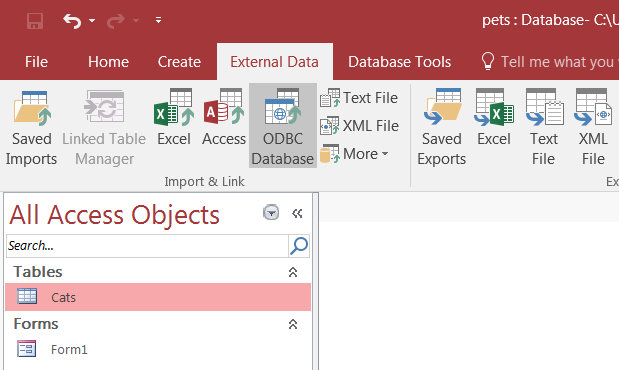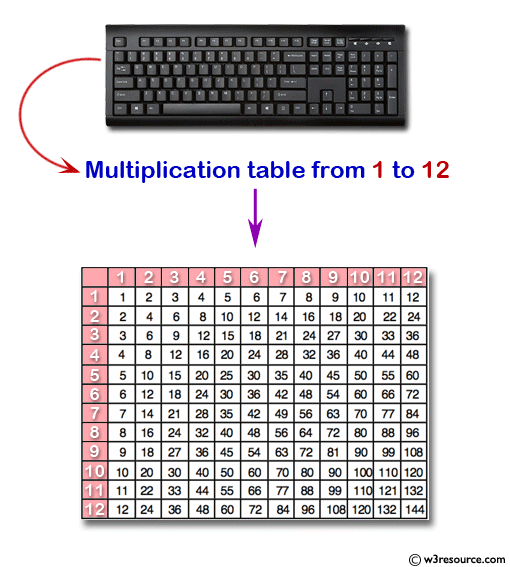- How To Create A Table In Dev C Download
- How To Create A Table In Dev C Online
- How To Make A Table In Dev C++
- How To Make Table In Dev C++
- Create A Table Online
- C++ Basics
Nov 29, 2016 Delphi is the ultimate IDE for creating cross-platform, natively compiled apps. Are you ready to design the best UIs of your life? Our award winning VCL framework for Windows and FireMonkey (FMX) visual framework for cross-platform UIs provide you with the foundation for intuitive, beautiful. I am looking for how to print in C so that table column width is fixed. Currently I have done using spaces and and -, but as soon as number goes to double digit all the alignment goes bad. C and table format printing. Ask Question. How to create beautiful textual tables in C? Also if anyone can tell me how do I load a file in order to make it appear on the console as well as the file. Because when I run the program I have to go look for the file instead of the file opening itself.
- C++ Object Oriented
- C++ Advanced
- C++ Useful Resources
- Selected Reading
There may be a situation, when you need to execute a block of code several number of times. In general, statements are executed sequentially: The first statement in a function is executed first, followed by the second, and so on.
Programming languages provide various control structures that allow for more complicated execution paths.
A loop statement allows us to execute a statement or group of statements multiple times and following is the general from of a loop statement in most of the programming languages −
C++ programming language provides the following type of loops to handle looping requirements.
| Sr.No | Loop Type & Description |
|---|---|
| 1 | while loop Repeats a statement or group of statements while a given condition is true. It tests the condition before executing the loop body. |
| 2 | for loop Execute a sequence of statements multiple times and abbreviates the code that manages the loop variable. |
| 3 | do...while loop Like a ‘while’ statement, except that it tests the condition at the end of the loop body. |
| 4 | nested loops You can use one or more loop inside any another ‘while’, ‘for’ or ‘do..while’ loop. |
Loop Control Statements
Loop control statements change execution from its normal sequence. When execution leaves a scope, all automatic objects that were created in that scope are destroyed.
C++ supports the following control statements.
| Sr.No | Control Statement & Description |
|---|---|
| 1 | break statement Terminates the loop or switch statement and transfers execution to the statement immediately following the loop or switch. |
| 2 | continue statement Causes the loop to skip the remainder of its body and immediately retest its condition prior to reiterating. |
| 3 | goto statement Transfers control to the labeled statement. Though it is not advised to use goto statement in your program. |
The Infinite Loop
A loop becomes infinite loop if a condition never becomes false. The for loop is traditionally used for this purpose. Since none of the three expressions that form the ‘for’ loop are required, you can make an endless loop by leaving the conditional expression empty.
When the conditional expression is absent, it is assumed to be true. You may have an initialization and increment expression, but C++ programmers more commonly use the ‘for (;;)’ construct to signify an infinite loop.
NOTE − You can terminate an infinite loop by pressing Ctrl + C keys.

To create a new table in your schema, you must have the CREATE TABLE system privilege. To create a table in another user's schema, you must have the CREATE ANY TABLE system privilege. Additionally, the owner of the table must have a quota for the tablespace that contains the table, or the UNLIMITED TABLESPACE system privilege.
Create tables using the SQL statement CREATE TABLE.
This section contains the following topics:
See Also:
Oracle Database SQL Language Reference for exact syntax of theCREATE TABLEand other SQL statements discussed in this chapter
Example: Creating a Table
When you issue the following statement, you create a table named admin_emp in the hr schema and store it in the admin_tbs tablespace:
Note the following about this example:
Integrity constraints are defined on several columns of the table.
The
STORAGEclause specifies the size of the first extent. See Oracle Database SQL Language Reference for details on this clause.Encryption is defined on one column (
ssn), through the transparent data encryption feature of Oracle Database. The Oracle Wallet must therefore be open for thisCREATETABLEstatement to succeed.The
photocolumn is of data typeBLOB, which is a member of the set of data types called large objects (LOBs). LOBs are used to store semi-structured data (such as an XML tree) and unstructured data (such as the stream of bits in a color image).One column is defined as a virtual column (
hrly_rate). This column computes the employee's hourly rate as the yearly salary divided by 2,080. See Oracle Database SQL Language Reference for a discussion of rules for virtual columns.A
COMMENTstatement is used to store a comment for the table. You query the*_TAB_COMMENTSdata dictionary views to retrieve such comments. See Oracle Database SQL Language Reference for more information.
See Also:
Oracle Database SQL Language Reference for a description of the datatypes that you can specify for table columns
Oracle Database Advanced Security Administrator's Guide for information about transparent data encryption and the Oracle Wallet
Oracle Database SecureFiles and Large Objects Developer's Guide for more information about LOBs.
Creating a Temporary Table
Temporary tables are useful in applications where a result set is to be buffered (temporarily persisted), perhaps because it is constructed by running multiple DML operations. For example, consider the following:
A Web-based airlines reservations application allows a customer to create several optional itineraries. Each itinerary is represented by a row in a temporary table. The application updates the rows to reflect changes in the itineraries. When the customer decides which itinerary she wants to use, the application moves the row for that itinerary to a persistent table.
During the session, the itinerary data is private. At the end of the session, the optional itineraries are dropped.
The definition of a temporary table is visible to all sessions, but the data in a temporary table is visible only to the session that inserts the data into the table.
Use the CREATE GLOBAL TEMPORARY TABLE statement to create a temporary table. The ON COMMIT clause indicates if the data in the table is transaction-specific (the default) or session-specific, the implications of which are as follows:
| ON COMMIT Setting | Implications |
|---|---|
DELETE ROWS | This creates a temporary table that is transaction specific. A session becomes bound to the temporary table with a transactions first insert into the table. The binding goes away at the end of the transaction. The database truncates the table (delete all rows) after each commit. |
PRESERVE ROWS | This creates a temporary table that is session specific. A session gets bound to the temporary table with the first insert into the table in the session. This binding goes away at the end of the session or by issuing a TRUNCATE of the table in the session. The database truncates the table when you terminate the session. |

This statement creates a temporary table that is transaction specific:
Indexes can be created on temporary tables. They are also temporary and the data in the index has the same session or transaction scope as the data in the underlying table.
By default, rows in a temporary table are stored in the default temporary tablespace of the user who creates it. However, you can assign a temporary table to another tablespace upon creation of the temporary table by using the TABLESPACE clause of CREATE GLOBAL TEMPORARY TABLE. You can use this feature to conserve space used by temporary tables. For example, if you need to perform many small temporary table operations and the default temporary tablespace is configured for sort operations and thus uses a large extent size, these small operations will consume lots of unnecessary disk space. In this case it is better to allocate a second temporary tablespace with a smaller extent size.
The following two statements create a temporary tablespace with a 64 KB extent size, and then a new temporary table in that tablespace.
Unlike permanent tables, temporary tables and their indexes do not automatically allocate a segment when they are created. Instead, segments are allocated when the first INSERT (or CREATETABLEASSELECT) is performed. This means that if a SELECT, UPDATE, or DELETE is performed before the first INSERT, the table appears to be empty.
DDL operations (except TRUNCATE) are allowed on an existing temporary table only if no session is currently bound to that temporary table.
If you rollback a transaction, the data you entered is lost, although the table definition persists.
A transaction-specific temporary table allows only one transaction at a time. If there are several autonomous transactions in a single transaction scope, each autonomous transaction can use the table only as soon as the previous one commits.
Because the data in a temporary table is, by definition, temporary, backup and recovery of temporary table data is not available in the event of a system failure. To prepare for such a failure, you should develop alternative methods for preserving temporary table data.
How To Create A Table In Dev C Download
Parallelizing Table Creation
How To Create A Table In Dev C Online
When you specify the AS SELECT clause to create a table and populate it with data from another table, you can utilize parallel execution. The CREATE TABLE...AS SELECT statement contains two parts: a CREATE part (DDL) and a SELECT part (query). Oracle Database can parallelize both parts of the statement. The CREATE part is parallelized if one of the following is true:
A
PARALLELclause is included in theCREATE TABLE...AS SELECTstatementAn
ALTER SESSION FORCE PARALLEL DDLstatement is specified
The query part is parallelized if all of the following are true:
The query includes a parallel hint specification (
PARALLELorPARALLEL_INDEX) or theCREATEpart includes thePARALLELclause or the schema objects referred to in the query have aPARALLELdeclaration associated with them.At least one of the tables specified in the query requires either a full table scan or an index range scan spanning multiple partitions.
If you parallelize the creation of a table, that table then has a parallel declaration (the PARALLEL clause) associated with it. Any subsequent DML or queries on the table, for which parallelization is possible, will attempt to use parallel execution.
How To Make A Table In Dev C++
The following simple statement parallelizes the creation of a table and stores the result in a compressed format, using table compression:

How To Make Table In Dev C++
In this case, the PARALLEL clause tells the database to select an optimum number of parallel execution servers when creating the table.
Create A Table Online
See Also:
Oracle Database Data Warehousing Guide for a detailed discussion about using parallel execution